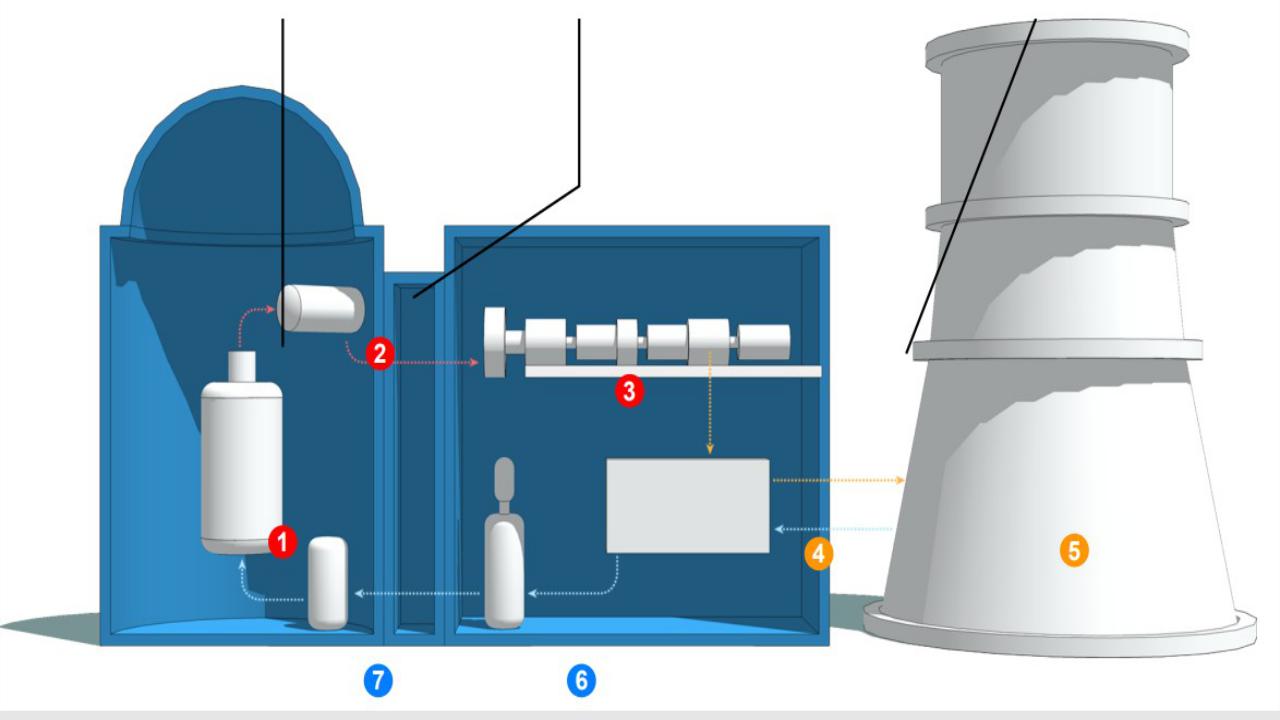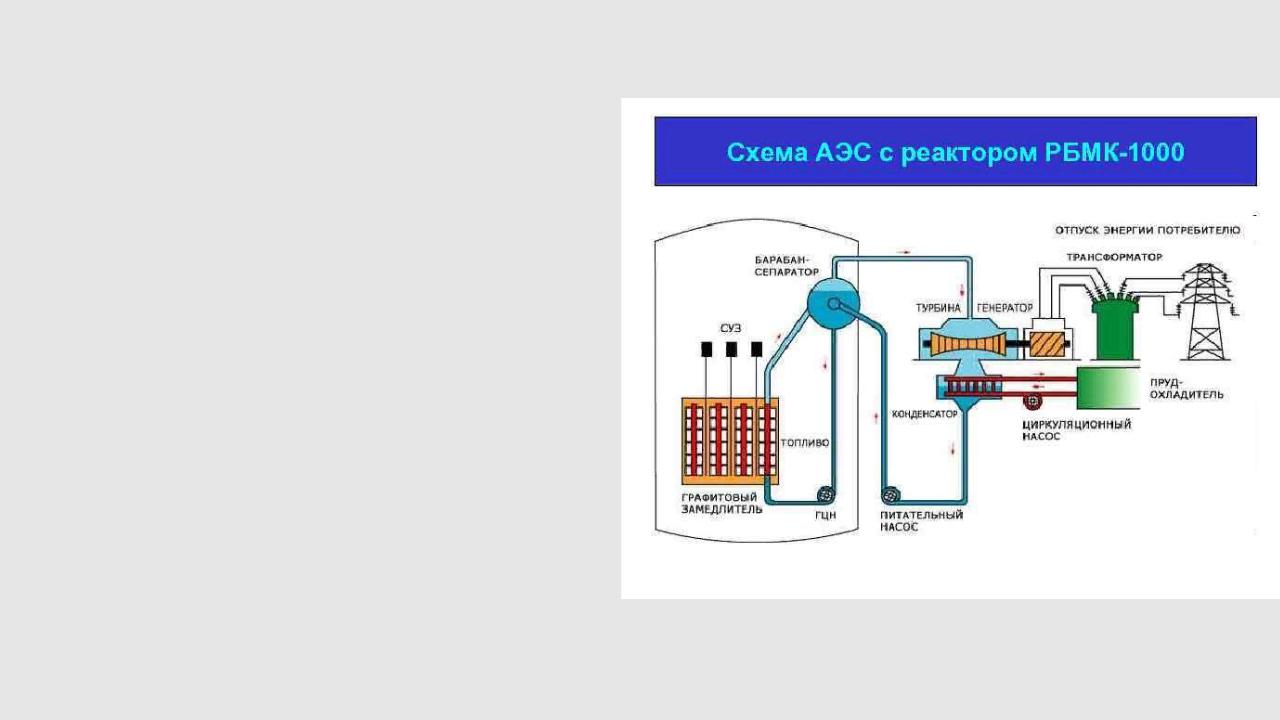
- •Nuclear power plant
- •A nuclear power plant is a complex of necessary systems, devices, equipment and
- •The world's first industrial nuclear power plant with a capacity of 5 MW
- •HOW DOES THE NPP WORK?
- •WHAT DOES A NUCLEAR POWER PLANT
- •The main element of the reactor is the active zone (1) . It
- •WHAT TYPES OF NUCLEAR POWER PLANTS ARE
- •NPP WITH 1-CIRCUIT REACTORS
- •NPP WITH 2-CIRCUIT REACTORS
- •NPP WITH 3-CIRCUIT REACTORS
- •Nuclear power solves the problem of exhaustion of natural organic energy sources (coal,
- •All developed countries are moving towards an increasingly widespread use of nuclear power
- •https://naked-science.ru/article/nakedscience/kak-ustroeny-at omnye

Nuclear power plant
Vyacheslav Ivanov
Ruslan Munykin
Konstantin Nachichko
242-об(2)

A nuclear power plant is a complex of necessary systems, devices, equipment and structures intended for the production of electrical energy. The station uses uranium-235 as fuel. The presence of a nuclear reactor distinguishes nuclear power plants from other power plants.

The world's first industrial nuclear power plant with a capacity of 5 MW was launched in the USSR in Obninsk in 1954. Modern large nuclear power plants have a block structure, i.e. they consist of several units (reactor + turbine) each with a capacity of about 1000 MW each.

2
3
1 |
4 |
5 |

HOW DOES THE NPP WORK?
REACTOR
The basis of the station is the reactor - a structurally allocated volume into which nuclear fuel is loaded and where a controlled chain reaction takes
place. Uranium-235 is fissile by slow (thermal) neutrons. As a result, a huge amount of heat is released.
STEAM GENERATOR Heat is removed from the reactor core by a coolant - a liquid or gaseous substance passing through its volume. This thermal energy is used to produce water vapor in a steam generator.
ELECTRIC GENERATOR The mechanical energy of the steam is directed to a turbogenerator, where it is converted into electrical energy and then passed through wires to consumers.

WHAT DOES A NUCLEAR POWER PLANT
CONSIST OF?
A nuclear power plant is a complex of buildings housing technological equipment. The main building is the main building, where the reactor hall is located. It houses the reactor itself, a nuclear fuel holding pool, a reloading machine (for reloading fuel), all of which is monitored by operators from the control room (control room).

The main element of the reactor is the active zone (1) . It is housed in a concrete shaft. Mandatory components of any reactor are a control and protection system that allows the selected mode of a controlled fission chain reaction to occur, as well as an emergency protection system to quickly stop the reaction in the event of an emergency. All this is mounted in the main building.
There is also a second building that houses the turbine hall (2) : steam generators, the turbine itself. Next along the technological chain are capacitors and high-voltage power lines that go beyond the station site.
On the territory there is a building for reloading and storing spent nuclear fuel in special pools. In addition, the stations are equipped with elements of a recirculating cooling system - cooling towers (3) (a concrete tower tapering at the top), a cooling pond (a natural reservoir or an artificially created one) and spray pools.

WHAT TYPES OF NUCLEAR POWER PLANTS ARE
THERE?
Depending on the type of reactor, a nuclear power plant may have 1, 2 or 3 coolant circuits. In Russia, the most widespread are double-circuit nuclear power plants with reactors of the VVER type (water-cooled power reactor).

NPP WITH 1-CIRCUIT REACTORS
The single-circuit scheme is used at nuclear power plants with RBMK-1000 type reactors. The reactor operates in a block with two condensing turbines and two generators. In this case, the boiling reactor itself is a steam generator, which makes it possible to use a single-circuit circuit. The single-circuit circuit is relatively simple, but radioactivity in this case spreads to all elements of the unit, which complicates biological protection.

NPP WITH 2-CIRCUIT REACTORS
The double-circuit scheme is used at nuclear power plants with pressurized water reactors of the VVER type. Water is supplied under pressure into the reactor core and heated. The coolant energy is used in the steam generator to generate saturated steam. The second circuit is non-radioactive. The unit consists of one 1000 MW condensing turbine or two 500 MW turbines with associated generators.
